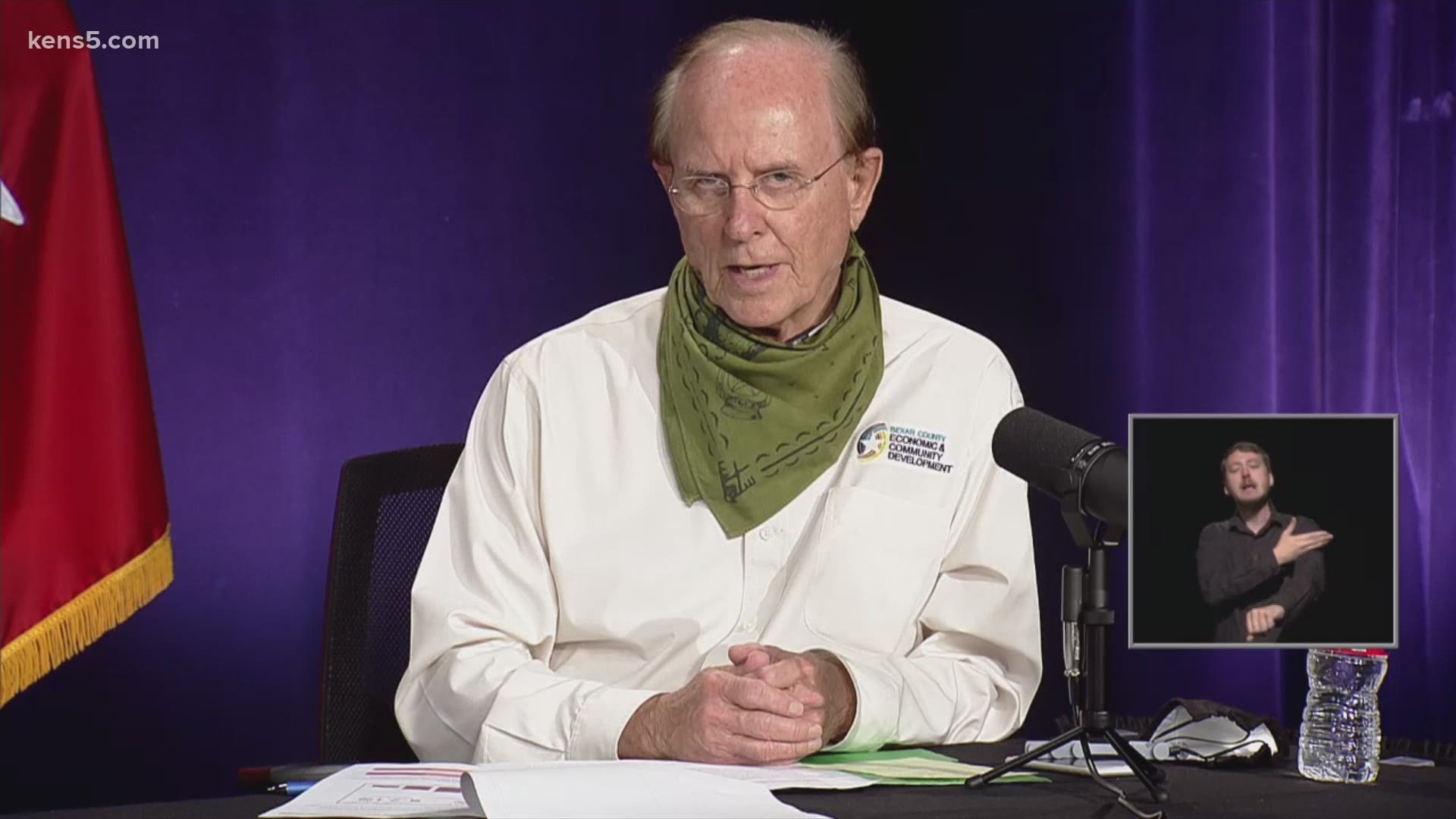SAN ANTONIO — We're tracking the latest numbers from the coronavirus pandemic in San Antonio and across Texas. Here are the latest numbers reported by Bexar and surrounding counties:
- Bexar County: 40 new cases were reported Monday, bringing the total number for the county to 46,441. The county death toll, meanwhile, rose to 809 after seven additiona
lfatalities were reported. - Comal County: The county reported 24 additional cases and two additional deaths Monday. There have been a total of 2,969 cases of COVID-19 in the county – including 2,353 confirmed cases – while 87 county residents have died. County officials say there are 445 active coronavirus cases, and 2,437 residents are considered recovered.
- Hays County: Officials in Hays County on Monday reported 35 new cases in the county and one new death. As of Monday, there are a total of 5,396 lab-confirmed cases in the county (2,329 of which are active) while the death toll increased to 47. 3,020 are considered recovered.

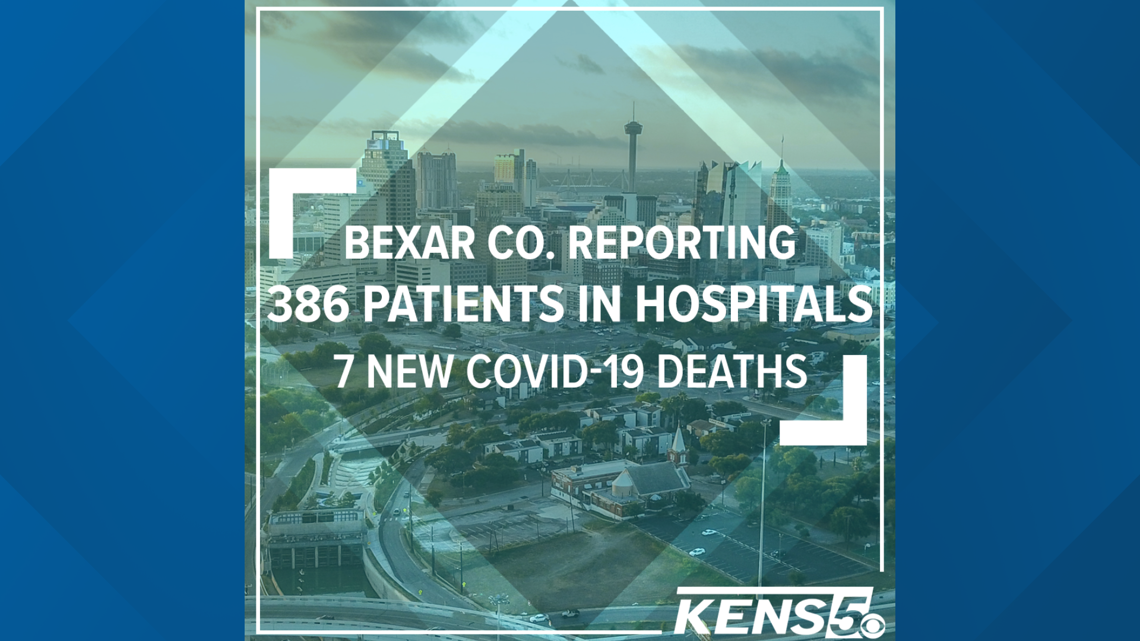
How Bexar County is trending
We've tracked how many coronavirus cases have been confirmed in Bexar County from the time officials began reporting cases in March 2020. The graphic below shows the number of cases since June and charts those daily case numbers along a 7-day moving average to provide a more accurate picture of the overall coronavirus case curve in our area and the direction we're trending amid the pandemic.
On Monday, San Antonio Mayor Ron Nirenberg reported 40 additional cases of the novel coronavirus, the lowest daily total of the past week. The development raises the county total to 46,441 cases since the pandemic began.

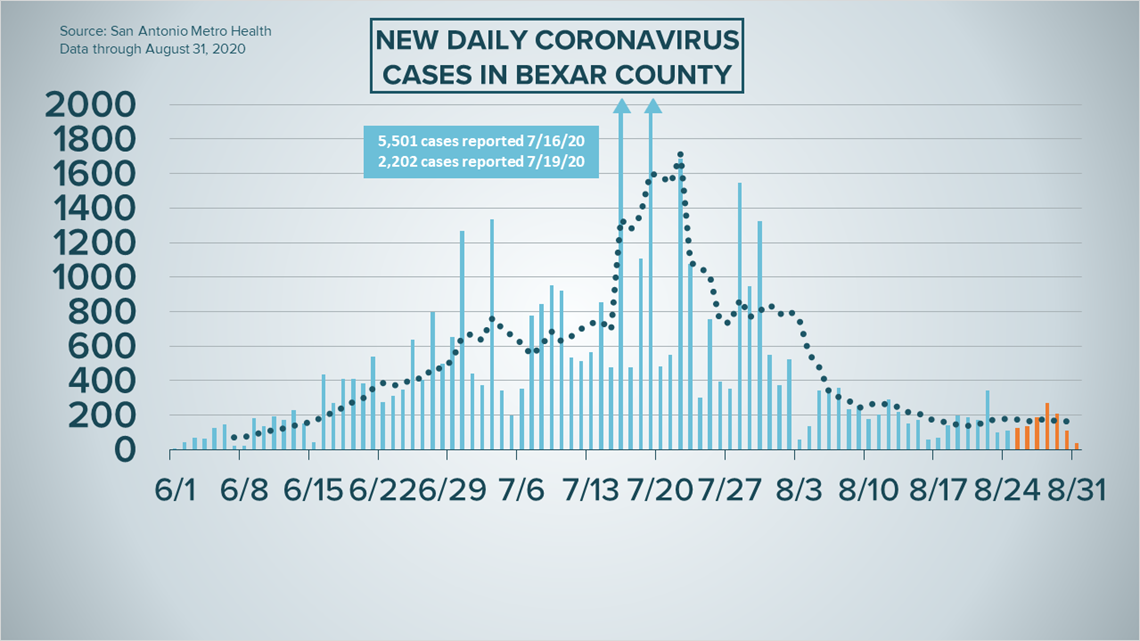
He also reported seven additional coronavirus-related deaths. In all, 809 Bexar County residents have lost their lives from coronavirus-related complications.
Hospitalizations for the county jumped by 20 to 386. However, the number of Bexar County COVID-19 patients on ventilators (95) and in intensive care (155) dropped from Sunday.

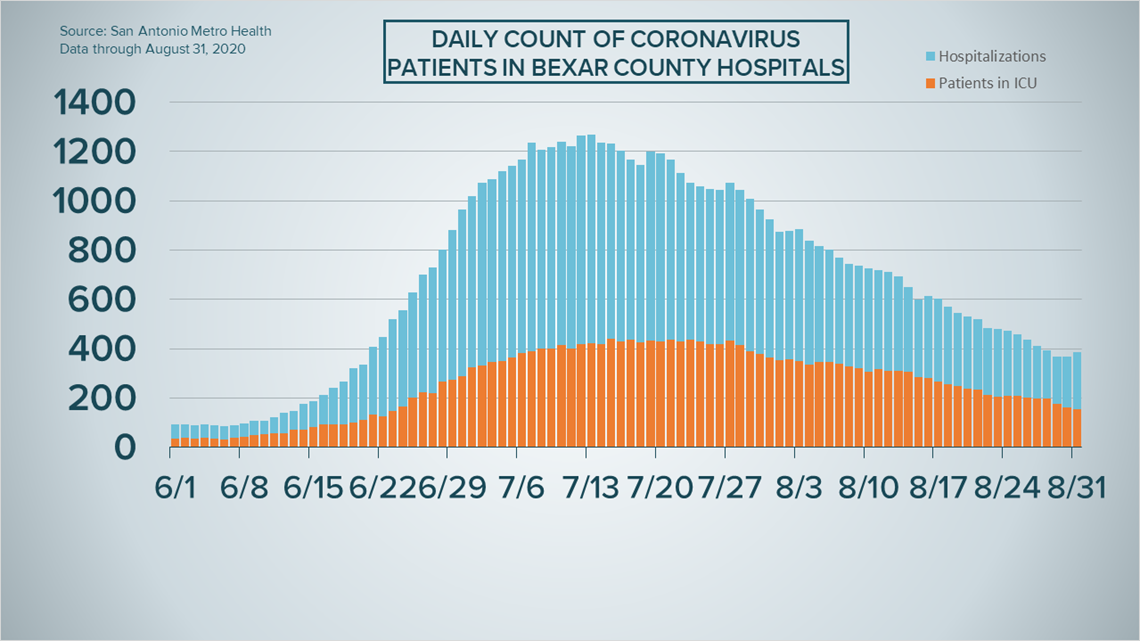
Mayor Nirenberg said that testing capacity and contact tracing are both looking good, and the positivity rate has fallen to 7.8%. He said that hospital numbers have been trending in the right direction, but hospitals still remain under significant stress.
He said the overall risk level moderate.
Coronavirus in Texas
The Texas Department of State Health Services on Monday reported an additional 2,374 cases of the novel coronavirus across the state, 241 of which are from backlog investigations.
It’s the lowest daily case number reported by the state since June 15.
As of Sunday, at least 610,354 Texans have been infected with COVID-19.

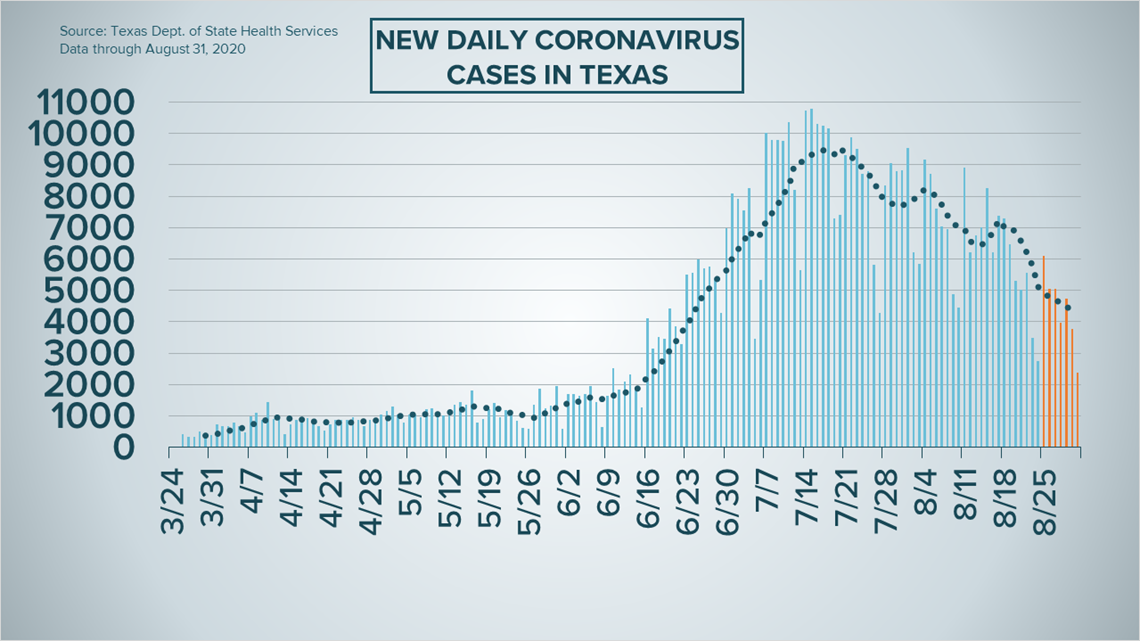
Meanwhile, the state also reported an additional 26 coronavirus-related deaths on Monday, raising the death toll to 12,536. It's just the fifth time in August that the Lone Star State saw fewer than 100 new deaths.
Texas hospitalizations dropped once again on Monday. The number of residents receiving treatment for COVID-19 symptoms increased slightly to 4,203, near the lowest level since late June. The number of Texans who have recovered from coronavirus passed 500,000 on Monday.
As the school year begins to get underway for local districts, we are also keeping track of the most important updates for each, including links to dashboards created to track coronavirus cases.
Latest Coronavirus Headlines
- UTSA releases plan to host fans at Alamodome for home football games this season
- Only 3 of Texas' 254 counties haven't had a single COVID-19 case
- San Antonio launches coronavirus workforce recovery program
- 2 UT Austin dorm students test positive for coronavirus
- CDC statistic on COVID-19 deaths does not mean only 6 percent died of the virus
- Remember the Alamo...virtually
Coronavirus symptoms
The symptoms of coronavirus can be similar to the flu or a bad cold. Symptoms include fever or chills, cough, shortness of breath or difficulty breathing, fatigue, muscle or body aches, headache, new loss of taste or smell sore throat, congestion or runny nose, nausea or vomiting and diarrhea, according to the Centers for Disease Control.
Most healthy people will have mild symptoms. A study of more than 72,000 patients by the Centers for Disease Control in China showed 80 percent of the cases there were mild.
But infections can cause pneumonia, severe acute respiratory syndrome, kidney failure, and even death, according to the World Health Organization. Older people with underlying health conditions are most at risk.
On June 25, the CDC expanded the list of groups at a higher risk of severe illness due to coronavirus.
Experts determined there was consistent evidence these conditions increase a person's risk, regardless of age:
- Chronic kidney disease
- COPD (chronic obstructive pulmonary disease)
- Obesity (BMI of 30 or higher)
- Immunocompromised state (weakened immune system) from solid organ transplant
- Serious heart conditions, such as heart failure, coronary artery disease, or cardiomyopathies
- Sickle cell disease
- Type 2 diabetes
The CDC believes symptoms may appear anywhere from two to 14 days after being exposed.
Human coronaviruses are usually spread...
- Between people who are in close contact with one another (within about 6 feet).
- Through respiratory droplets produced when an infected person coughs, sneezes or talks. These droplets can land in the mouths or noses of people who are nearby or possibly be inhaled into the lungs.
- Some recent studies have suggested that COVID-19 may be spread by people who are not showing symptoms.
Help stop the spread of coronavirus
- Stay home when you are sick.
- Eat and sleep separately from your family members
- Use different utensils and dishes
- Cover your cough or sneeze with your arm, not your hand.
- If you use a tissue, throw it in the trash.

